Abstract
In 1980, an outbreak of a mild illness involving twenty pupils and four adults in a boys' boarding school was identified serologically as psittacosis. Intensive epidemiological investigations did not uncover the source. It is suggested either that sources of chlamydia other than avian exist, which may produce a milder illness than the avian type, or that human-to-human spread of a mild form of chlamydiosis occurs.
Full text
PDF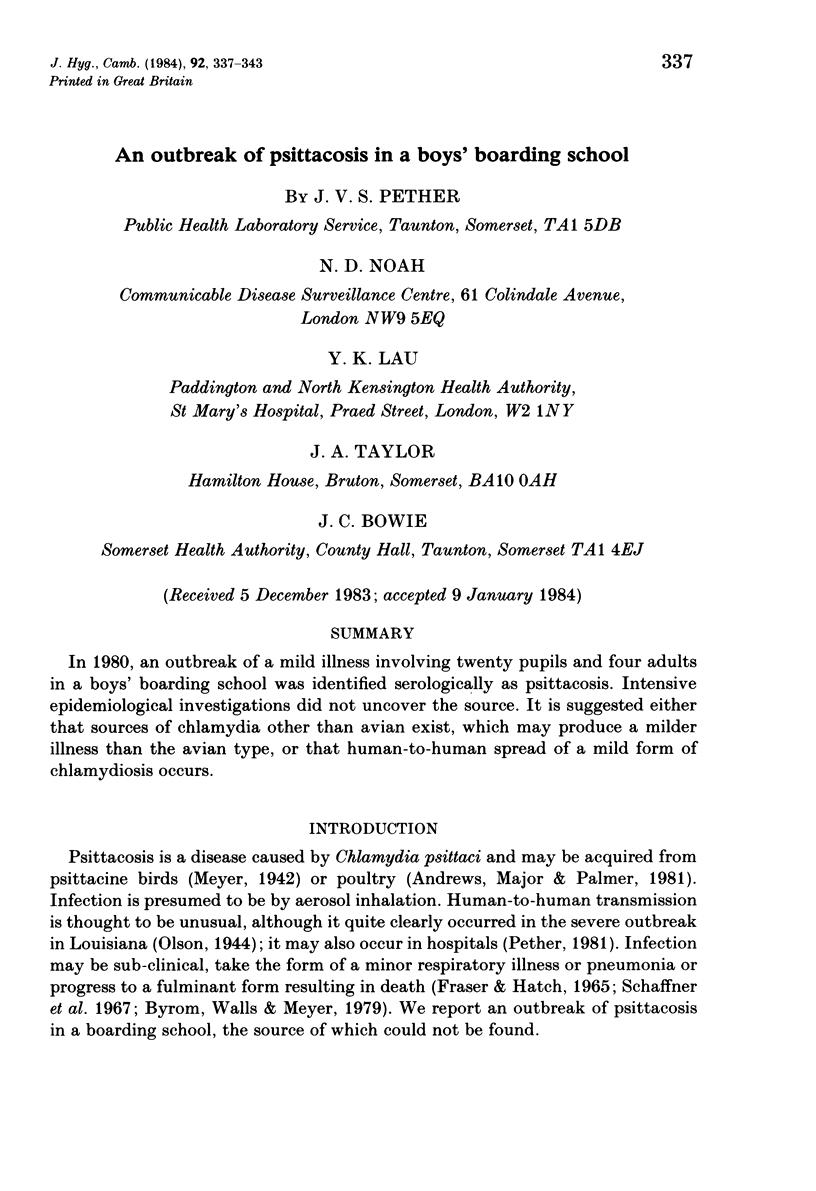
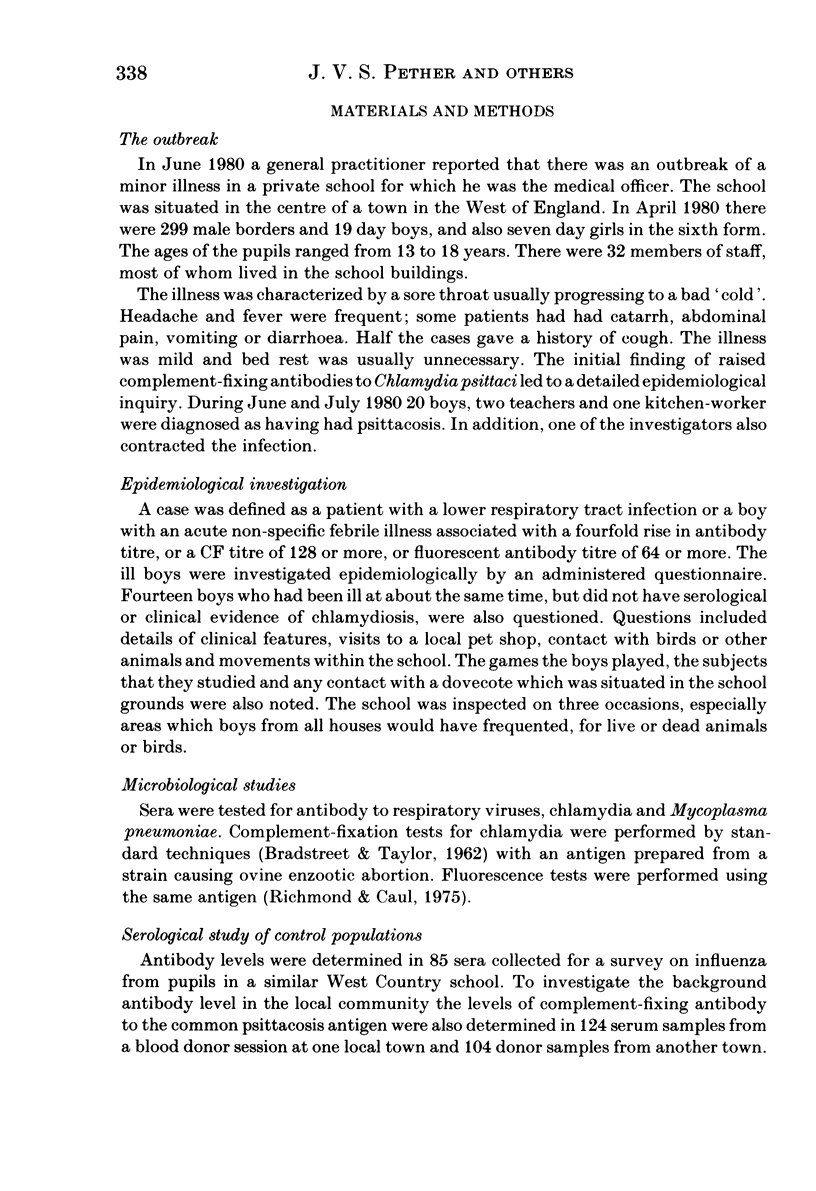
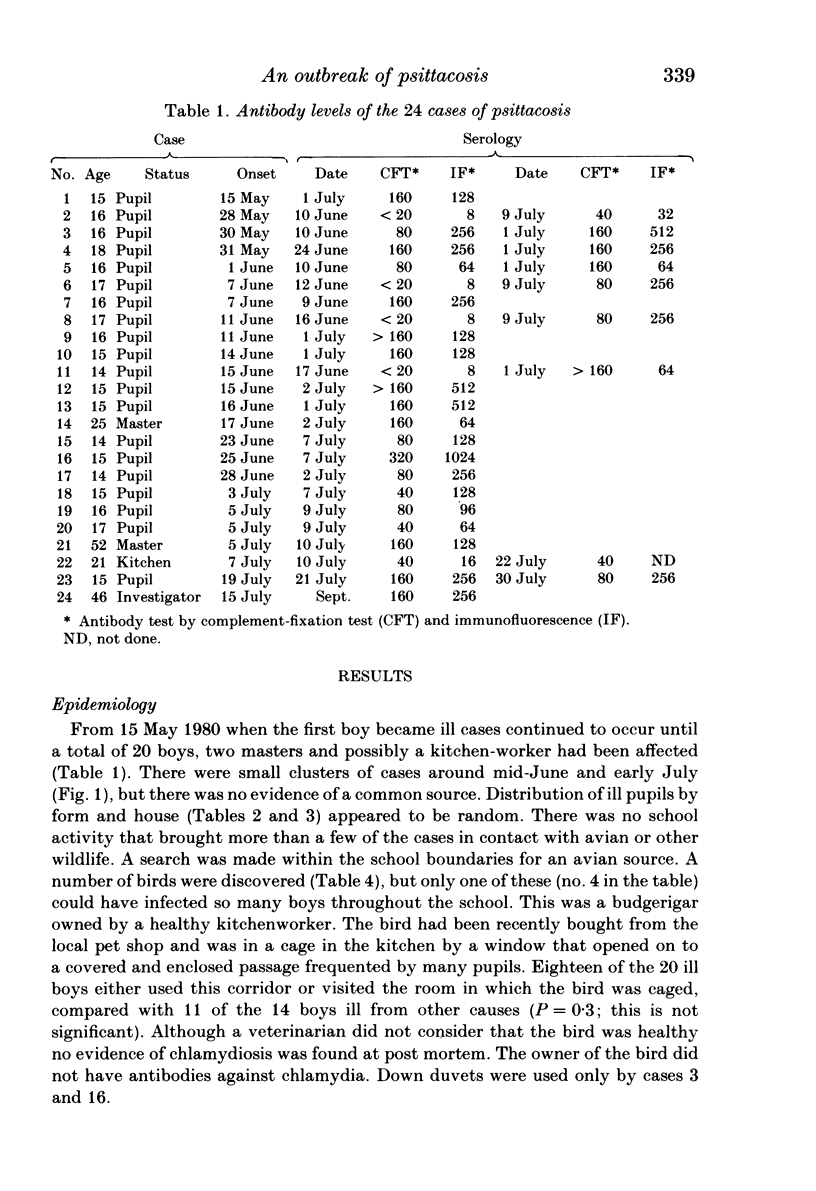
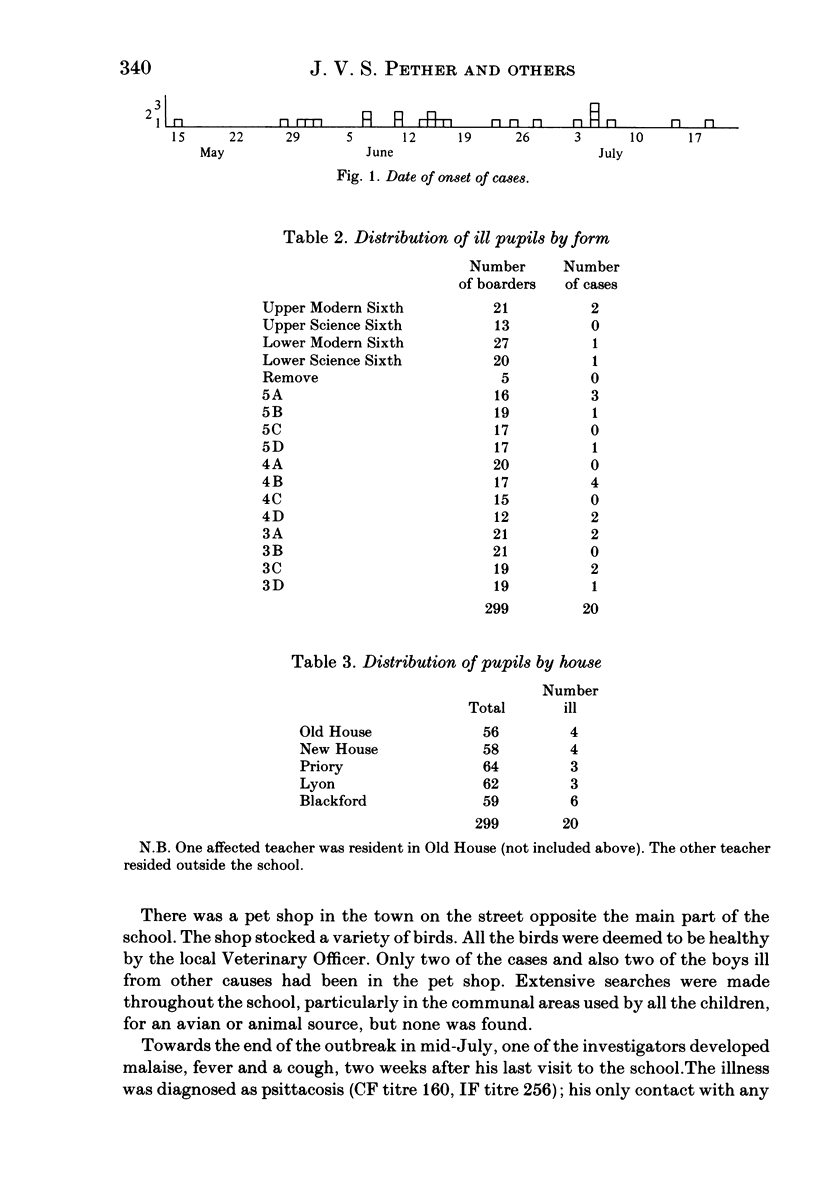
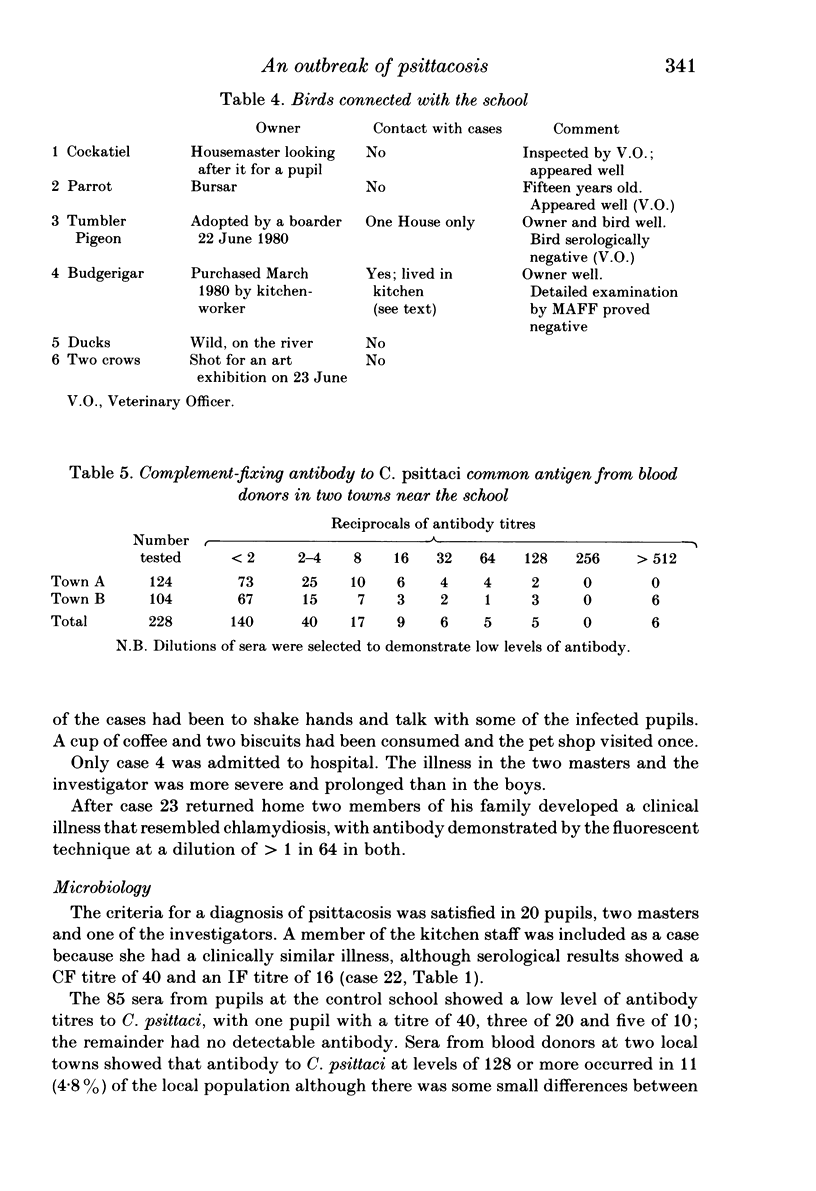
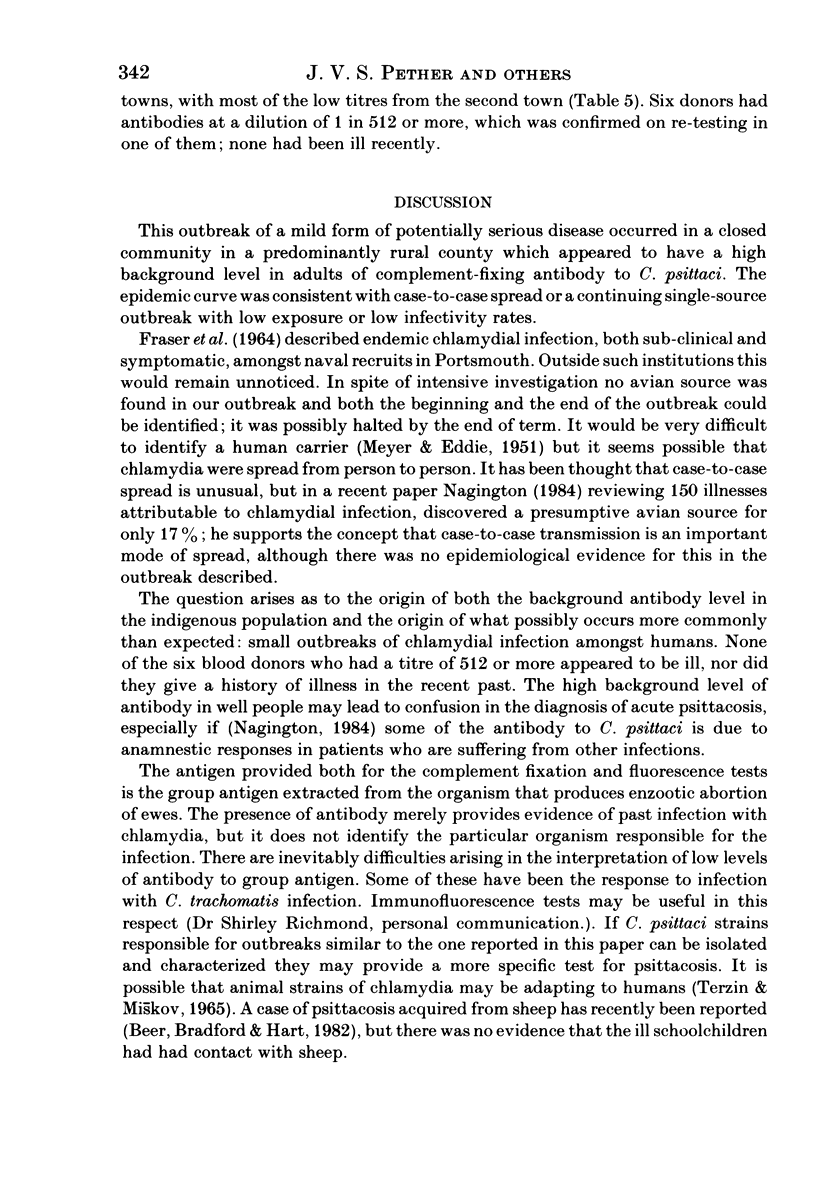
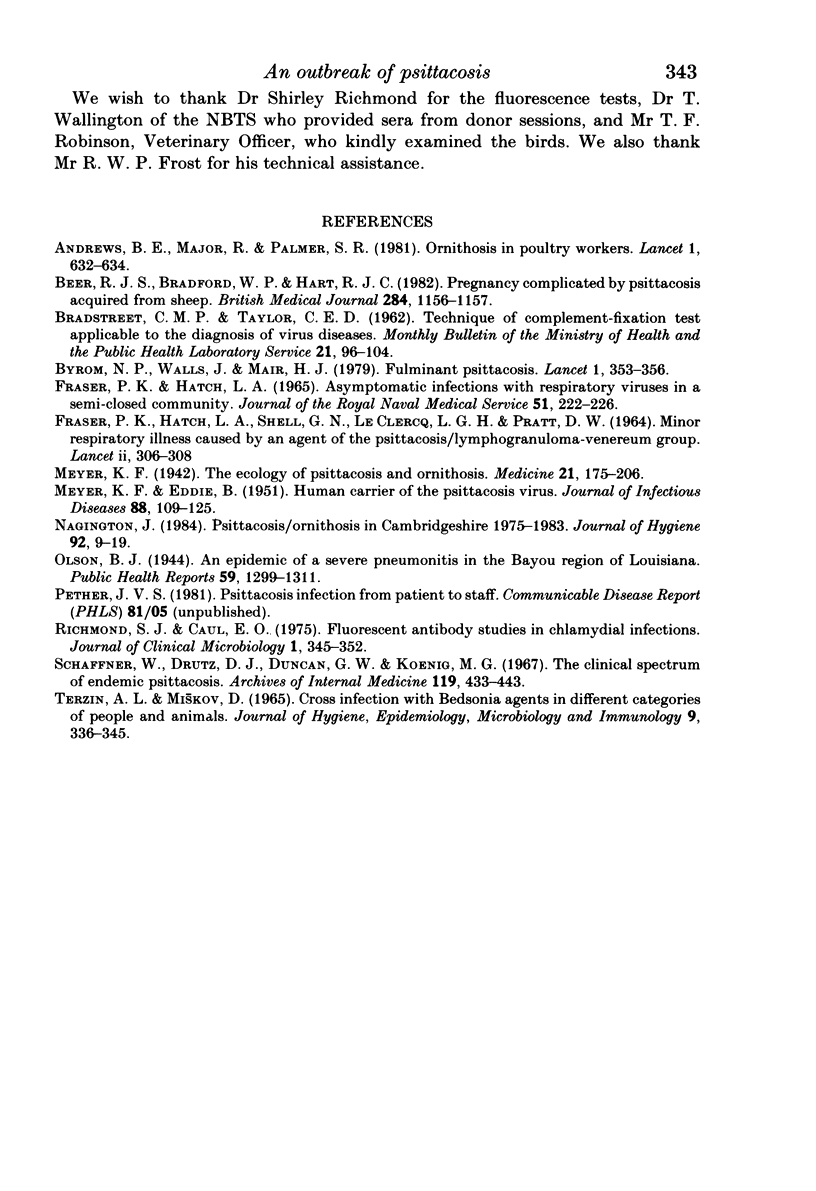
Selected References
These references are in PubMed. This may not be the complete list of references from this article.
- Andrews B. E., Major R., Palmer S. R. Ornithosis in poultry workers. Lancet. 1981 Mar 21;1(8221):632–634. doi: 10.1016/s0140-6736(81)91552-x. [DOI] [PubMed] [Google Scholar]
- BRADSTREET C. M., TAYLOR C. E. Technique of complementfixation test applicable to the diagnosis of virus diseases. Mon Bull Minist Health Public Health Lab Serv. 1962 May;21:96–104. [PubMed] [Google Scholar]
- Beer R. J., Bradford W. P., Hart R. J. Pregnancy complicated by psittacosis acquired from sheep. Br Med J (Clin Res Ed) 1982 Apr 17;284(6323):1156–1157. doi: 10.1136/bmj.284.6323.1156. [DOI] [PMC free article] [PubMed] [Google Scholar]
- Byrom N. P., Walls J., Mair H. J. Fulminant psittacosis. Lancet. 1979 Feb 17;1(8112):353–356. doi: 10.1016/s0140-6736(79)92892-7. [DOI] [PubMed] [Google Scholar]
- FRASER P. K., HATCH L. A., SHELL G. N., LECLERCQ L. G., PRATT D. W. MINOR RESPIRATORY ILLNESSES CAUSED BY AN AGENT OF THE PSITTACOSIS/LYMPHOGRANULOMA-VENEREUM GROUP. Lancet. 1964 Aug 8;2(7354):306–308. doi: 10.1016/s0140-6736(64)93063-6. [DOI] [PubMed] [Google Scholar]
- Fraser P. K., Hatch L. A. Asymptomatic infections with respiratory viruses in a semi-closed community. J R Nav Med Serv. 1965 Summer;51(2):222–227. [PubMed] [Google Scholar]
- MEYER K. F., EDDIE B. Human carrier of the psittacosis virus. J Infect Dis. 1951 Mar-Apr;88(2):109–125. doi: 10.1093/infdis/88.2.109. [DOI] [PubMed] [Google Scholar]
- Nagington J. Psittacosis/ornithosis in Cambridgeshire 1975-1983. J Hyg (Lond) 1984 Feb;92(1):9–19. doi: 10.1017/s0022172400063981. [DOI] [PMC free article] [PubMed] [Google Scholar]
- Public Health Weekly Reports for OCTOBER 6, 1944. Public Health Rep. 1944 Oct 6;59(40):1299–1329. [PMC free article] [PubMed] [Google Scholar]
- Richmond S. J., Caul E. O. Fluorescent antibody studies in chlamydial infections. J Clin Microbiol. 1975 Apr;1(4):345–352. doi: 10.1128/jcm.1.4.345-352.1975. [DOI] [PMC free article] [PubMed] [Google Scholar]
- Schaffner W., Drutz D. J., Duncan G. W., Koenig M. G. The clinical spectrum of endemic psittacosis. Arch Intern Med. 1967 May;119(5):433–443. [PubMed] [Google Scholar]
- Terzin A. L., Miskov D. Crossinfection with Bedsonia agents in different categories of people and animals. J Hyg Epidemiol Microbiol Immunol. 1965;9(3):336–345. [PubMed] [Google Scholar]


